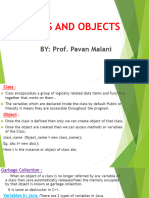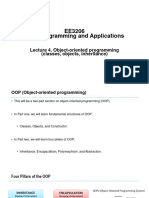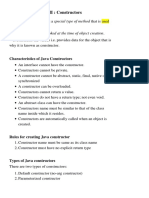0% found this document useful (0 votes)
7 views68 pagesInheritance, Packages and Interfaces - Unit - 2
The document discusses key concepts in object-oriented programming, including method overloading, inheritance, and the use of classes and interfaces. It explains method overloading rules, the use of objects as parameters, and the significance of static, nested, and inner classes. Additionally, it covers inheritance types, the super keyword, method overriding, dynamic method dispatch, and abstract classes.
Uploaded by
kiruthika.ncseCopyright
© © All Rights Reserved
We take content rights seriously. If you suspect this is your content, claim it here.
Available Formats
Download as PPTX, PDF, TXT or read online on Scribd
0% found this document useful (0 votes)
7 views68 pagesInheritance, Packages and Interfaces - Unit - 2
The document discusses key concepts in object-oriented programming, including method overloading, inheritance, and the use of classes and interfaces. It explains method overloading rules, the use of objects as parameters, and the significance of static, nested, and inner classes. Additionally, it covers inheritance types, the super keyword, method overriding, dynamic method dispatch, and abstract classes.
Uploaded by
kiruthika.ncseCopyright
© © All Rights Reserved
We take content rights seriously. If you suspect this is your content, claim it here.
Available Formats
Download as PPTX, PDF, TXT or read online on Scribd
/ 68
































































































